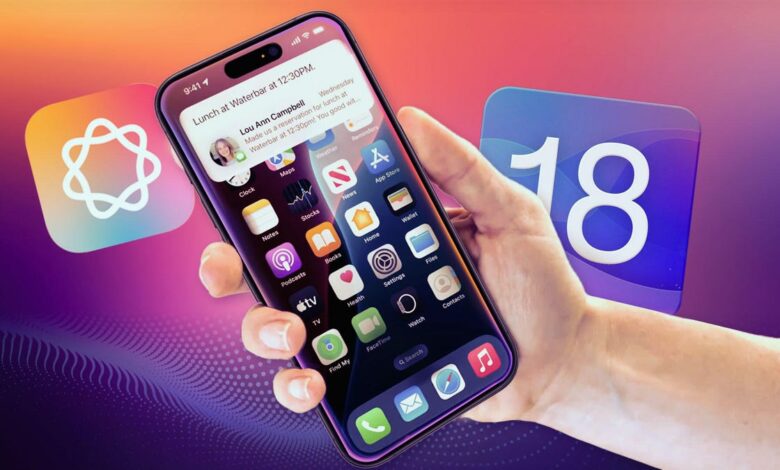CNET poll: A quarter of smartphone owners find new AI features unhelpful


Key points:
- A quarter of smartphone owners (25%) do not find AI features useful, 45% do not want to pay a monthly subscription fee for AI capabilities and 34% are concerned about privacy.
- Just over half (52%) of smartphone owners are not interested in purchasing a foldable phone.
- The biggest motivator for US adult smartphone owners to upgrade their devices is longer battery life (61%), followed by more storage (46%) and better camera features (38%). Only 18% say their main motivator is AI integrations.
Smartphone manufacturers like Apple, Google and Samsung are increasingly emphasizing AI features in their latest devices. A survey by CNET found that a quarter of smartphone owners don’t find these capabilities particularly useful, with only 18% saying AI integration would be the main reason they upgraded their phone.

Check this out: The iPhone 16 comes with AI Drama
According to respondents, the top reasons for buying a new device are longer battery life (61%), more storage (46%) and better camera features (38%).
That comes as Apple on Monday unveiled its iPhone 16 lineup, which will include the company’s new Apple Intelligence suite of AI features when it rolls out later this year. Apple Intelligence includes capabilities like a smarter Siri, AI-powered writing tools and ChatGPT integration.
Google also leaned heavily on AI features when it unveiled the Pixel 9 series last month, spending a large chunk of its keynote discussing new Gemini features like Live, which lets you have a natural-sounding, back-and-forth conversation with the virtual assistant. And at its Unpacked event in July, Samsung similarly touted Galaxy AI, which can simplify tasks like translating messages and editing photos.
While these new features rely on generative AI to produce text or images, or to augment digital assistants, AI itself has been embedded in smartphones for years. Your phone’s camera, for example, uses AI to process images and blur backgrounds in portrait mode, and Siri and Google Assistant have always been powered by AI (albeit using less advanced versions of the technology). But because this new wave of AI introduces ways to perform tasks on your phone more explicitly, rather than blending in with existing features, it may take some time for people to get used to it.
AI could soon cost you money — and not everyone is convinced
As tech giants continue to roll out these AI features, consumers may soon have to pay the price if they want to keep using them. Samsung’s website states that Galaxy AI features “will be offered for free on supported Samsung Galaxy devices through the end of 2025.” To unlock the full power of Gemini within Google’s apps, you’ll need to subscribe to Gemini Advanced. And it’s likely that Apple will one day start charging for some of its AI-powered iPhone features, too.
Many consumers aren’t convinced. Nearly half of smartphone owners say they’re unwilling to pay extra money to access AI on their phones. That’s not a surprise, given how much subscription fatigue is already eating away at people. Another CNET survey from April found that U.S. adults spend an average of $91 per month on subscription services. Two-thirds of respondents said at least one of their plans has increased in price in the past year. So adding yet another monthly fee might not be so appealing.
Still, there are those eager to use AI on their phones, with Gen Zers and Millennials being the most excited: 20% of respondents from each generation say they are excited about AI capabilities and find them useful. Additionally, 15% of Gen Zers and 16% of Millennials use AI on their phones for tasks like editing photos, creating images, and summarizing or writing text. Additionally, 20% of Gen Zers and 19% of Millennials regularly use an AI tool like ChatGPT or Google Gemini on their smartphone.
Privacy remains a major concern when it comes to AI, with a third (34%) of smartphone owners expressing discomfort in the area. Tech giants are increasingly emphasizing privacy concerns during their AI-focused keynotes. For example, at its Worldwide Developers Conference in June, Apple noted that many of its AI models run on-device, which is generally considered more private because information doesn’t have to travel over the internet. When a task requires more processing power, relevant data is sent to Apple Silicon servers and that data will not be saved or made accessible to Apple, the company said.
Top Reasons to Upgrade a Phone
With AI now one of the last reasons consumers are looking to upgrade their smartphones, other considerations such as longer battery life, more storage, and better camera features still dominate. Other motivators include the phone’s display and screen size (32%); keeping the same ecosystem, such as iOS or Android (24%); and the color of the phone (10%).
With the high cost of devices (many flagship phones cost between $800 and $1,200), consumers may not want to upgrade their devices as often. According to our research, 44% say they only get a new device if their current phone breaks or needs to be replaced. Further, 30% hold on to their devices for three years or more, while 18% upgrade every two years, and only 8% get a new phone every year.
Fortunately for consumers, Apple didn’t hike the price of the iPhone 16. Still, iPhone users are holding on to their devices longer than other smartphone owners, with a third waiting three years or more before upgrading.
The hype surrounding foldable phones isn’t quite over yet
Companies like Google and Samsung have continued to release foldable phones, the latest being the Pixel 9 Pro Fold and the Galaxy Z Flip and Fold 6, respectively. But consumers are still lukewarm on the concept of a foldable handheld device. Just over half (52%) of smartphone owners say they aren’t interested in buying a foldable phone, while 13% say they would be interested at some point in the next two years.
That gives Apple, which has yet to enter the foldable phone market, a chance to capitalize on that interest. Experts have long speculated that a foldable iPhone could be what’s needed to spur wider adoption of foldable smartphones. But that could be a few years away from happening, if it ever does.
Methodology
All figures, unless otherwise stated, are from YouGov Plc. The total sample size was 2,484 adults, including 2,387 smartphone owners. Fieldwork was conducted August 28-30, 2024. The survey was conducted online. Figures are weighted and representative of all U.S. adults (18 years and older).




